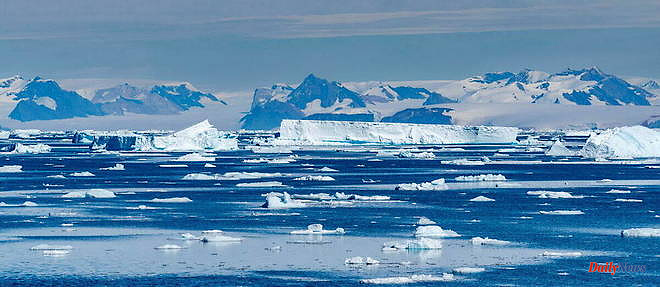It's a sad record. The extent of the Antarctic sea ice reached a melting record in February, in the middle of the austral summer, the European climate observatory confirmed on Wednesday after similar American data, suggesting an intensification of the melt over the last decade. .
Sea ice, which melts in the summer and rebuilds in the winter, reached "its lowest extent in 45 years that satellite data has been recorded" on February 16, said Samantha Burgess, deputy head of the observatory of change. European Union's Copernicus (C3S) climate system. "The minimum daily Antarctic sea ice extent was reached on February 16, 2023 with a total extent of 2.06 million km²," C3S told AFP.
These observations confirm those of the reference American observatory, the National Snow and Ice Data Center (NSIDC), which also announced that it had measured a record minimum extent of the Antarctic sea ice in February. The NSIDC, which produces its own satellite data using a different method, announced a minimum extent of "1.79 million square kilometers" reached on February 21, stating that this was a "preliminary" figure. to be confirmed, already well below the February 2022 record.
The melting of sea ice has no immediate impact on sea level, because it forms by freezing the salt water already present in the ocean. But its melting subjects the ice cap to the onslaught of the waves. However, this ice cap – a thick freshwater glacier that covers Antarctica – is particularly monitored by scientists because it contains enough water to cause a catastrophic rise in the level of the oceans if it were to melt.
Moreover, the white pack ice reflects the sun's rays more than the darker ocean, and its loss thus accentuates global warming because the rays are less reflected back into space. "The polar ice caps are a telling indicator of the climate crisis and it is important to closely monitor the changes taking place there," Samantha Burgess said in a statement.
For Copernicus, the Antarctic sea ice, for the whole of February 2023, was "34% below average", beating the monthly record of February 2017, itself close to the levels reached in 2018 and 2022. is the 8th year in a row that this pack ice has melted more than the average minimum for the month of February, according to C3S data (3.4 million square kilometers over the period 1991-2020).
This observation raises fears that a significant trend of reduction in sea ice is taking place for the first time at the South Pole, whereas it was relatively stable over the previous four decades despite strong annual variations, unlike the North Pole, where the melting is very marked.












